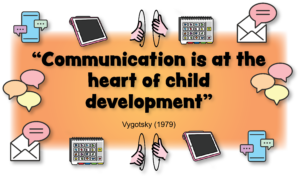Key Benefits of Key Word Signing (KWS)

Welcome to our overview of the key benefits of Key Word Signing. If you’re exploring Key Word Sign as a communication tool for your child, it’s important to understand the many ways it can support and enhance their development.
This page summarises some of the most significant advantages of incorporating Key Word Signing into your child’s communication strategy. Whether you’re new to Key Word Sign or looking to deepen your understanding, this overview will help you appreciate how this approach can positively impact your child’s ability to express themselves, connect with others, and develop essential skills.
Key Benefits of Key Word Signing
Key Word Sign (KWS) is a fantastic communication tool that offers many benefits, especially for individuals who are pre or non speaking or have communication challenges. By combining signs with spoken words, KWS boosts communication, supports speech development, and helps overall cognitive growth. Here’s a detailed look at the benefits of Key Word Sign:
Communication Benefits
Research shows that many babies and children can start using gestures and signs before they begin to talk. We’ve outlined the main theorised reasons for this below.
Early Use:

Gestures are a natural precursor to speech, and this principle supports why children can often use signs before they develop spoken language.
Just as babies use gestures to communicate before they speak their first words, Key Word Sign (KWS) enables children to express themselves using signs even if they haven’t yet mastered verbal communication.
The act of using signs is more visible and tangible than internal speech, making it easier for children to understand and replicate.
By incorporating signs into their daily routines, children can begin to communicate their needs and wants effectively, providing a crucial means of expression before their spoken language skills fully develop.
Slowing Down Your Speech:
Using Key Word Sign naturally helps you slow down your speech because signing takes a bit longer than speaking.
This slower pace gives your child more time to see and understand the signs along with hearing the words.
By taking it slower and focusing on key signs, you make it easier for your child to follow what’s being said and connect the signs with the words.
This helps them learn and understand better, making communication clearer and more effective.

Visual Processing

For children with auditory processing challenges, such as those with Down syndrome or autism, Key Word Signing offers a helpful visual approach.
Since many children process visual information more effectively than auditory, using signs alongside spoken words caters to their preferred learning style.
This multi-modal approach supports better communication by providing a clear visual aid, making it easier for children who struggle with auditory processing to understand and engage.
Easy to Recognise:
Signs are often easier for children to recognise because they provide a clear, visual representation of words and concepts. Many signs are iconic, meaning they visually resemble the objects or actions they represent.
For example, the sign for “drink” mimics the action of bringing a cup up to the mouth. This visual similarity helps children quickly connect the sign with its meaning, making it easier for them to learn and remember.
Unlike spoken words, which can be abstract and fleeting, signs offer a concrete and memorable way to convey ideas, making them a powerful tool for supporting communication and language development.

Better Understanding:

Signs offer a static, visual form of communication that helps children grasp and remember concepts more effectively.
Unlike spoken words, which are transient and quickly disappear, signs can be held and repeated, giving children more time to process and learn them.
This visual reinforcement allows children to see and review signs at their own pace, which supports better comprehension.
By integrating signs into their communication, children benefit from a clear and consistent representation of ideas, helping them connect words with their meanings more thoroughly and build a stronger foundation for understanding spoken language.
Hands are External to the Body:
Using signs is often easier for children than spoken words because hands are external and visible.
Unlike speech, which involves internal mouth movements that are hard for children to see, signs involve gestures made with the hands and arms. This visibility allows children to watch and imitate the signs more easily.
They can see the shape of the hands, the movement, and the way signs are formed, which helps them learn and replicate the signs.
This external nature of signs makes them a more accessible and tangible form of communication for children, especially those who are still developing their spoken language skills.

Benefits of Improved Communication
Using Key Word Sign greatly improves communication, leading to many positive outcomes for children and their families. When children can use signs to show what they need, want, or how they feel, they get less frustrated and have fewer emotional outbursts because they are better understood and their needs are met more quickly. This helps create a more peaceful and happy environment where children feel more secure and content. Also, when children and their caregivers use signs to communicate, it strengthens their bond and makes interactions more meaningful.
Unlike other AAC tools, once a sign is learned, it doesn’t require anything extra to use, which can make it quicker and often more efficient. This way, families can enjoy smoother communication and less stress.
Speech Development Benefits
Research shows that using gestures can encourage the development of speech. We’ve highlighted the key theories for this below.
Broca Area:

Using Key Word Sign, like how babies naturally use gestures, can stimulate areas of the brain involved in speech production, such as the Broca’s area.
Just as babies begin with gestures before they speak, using Key Word Sign helps activate the neural pathways necessary for verbal communication. This early engagement with gestures could potentially be preparing the mouth and jaw for speech, making it easier for children to learn and produce spoken words.
By incorporating Key Word Sign into their communication toolkit, children not only enhance their understanding and use of language but also encourage the brain’s development in areas crucial for effective speech.
Segmented Speech:
Key Word Signing (KWS) helps children break down spoken language into smaller, manageable parts by associating signs with individual words or phrases.
As words and signs are used simultaneously, this visual and auditory connection enhances children’s ability to grasp and understand these components.
This dual approach makes it easier for them to comprehend and remember the meanings, leading to improved receptive understanding of language.
As children become more familiar with the signs and their corresponding words, they are likely to start recognising and understanding spoken sounds earlier. This enhanced comprehension supports clearer articulation of words and contributes to more effective speech development over time.

Iconic Signs:

Iconic signs are particularly beneficial because they visually resemble the objects or actions they represent. This visual connection helps children to recognise and understand the signs more easily.
As children grasp the meaning of these signs, they may develop an earlier receptive understanding of the associated spoken words. This early recognition can lead to an improved ability to identify and mimic the sounds of these words.
Essentially, by connecting the visual sign with its spoken counterpart, children may be more likely to comprehend and produce the words more quickly and accurately, supporting their overall speech development.
Additional Benefits
Literacy Development:

Key Word Sign (KWS) plays a significant role in enhancing literacy, as outlined in Marilyn Daniels’ book, Dancing with Words: Signing for Hearing Children’s Literacy. This book highlights how integrating signing into literacy activities can profoundly support children’s literacy development.
By associating signs with specific words, children engage in both visual and tactile learning processes. This dual approach helps reinforce word recognition and comprehension. The visual nature of signs provides a concrete representation of abstract concepts, making it easier for children to grasp and remember new vocabulary.
Furthermore, the touch-based aspect of signing allows children to physically interact with language, which can enhance their understanding of word meanings and improve their ability to recall and use these words in reading and writing tasks. Overall, incorporating Key Word Sign into literacy practices offers a multi-sensory approach that can boost children’s ability to use language more effectively.
Mathematical Concepts:
Key Word Sign (KWS) can positively impact cognitive development, including understanding mathematical concepts and spatial reasoning. While research specifically on gestures and iconic gestures—types of signs—has shown benefits in this area, the principles apply to KWS as well.
Using signs to represent numbers and spatial concepts can help children grasp abstract ideas more effectively. For example, incorporating signs for numerical values and spatial relationships (like “up,” “down,” “left,” and “right”) can make these concepts more tangible and understandable.
The visual and physical nature of signs provides a concrete representation of abstract mathematical and spatial ideas, which aids in mental rotation and spatial awareness. By integrating signs into learning activities, children can develop a stronger foundation in these cognitive skills, which supports their overall academic growth and problem-solving abilities. For more information of potential benefits of using key word sign for learning mathematical concepts please click here.

Learning Second Language

Research shows that iconic gestures, similar to Key Word Signs, can be highly beneficial for learning a second language. These gestures help learners visualise and remember new words and concepts more effectively. Using gestures alongside verbal learning not only aids in comprehension but also enhances retention of the new language. This approach supports quicker and more robust language acquisition, making it easier for learners to grasp and retain new vocabulary over time.
Key Word Sign brings a range of benefits, from improving communication and aiding speech development to boosting literacy and cognitive skills. If you’re eager to use Key Word Sign with your child, check out our Getting Started page for helpful tips and resources. For personalised training and more resources like posters, flashcards, and storybooks, visit our Training and Resources sections. We’re here to help make communication easier and more effective for your child.
Conclusion
Key Word Sign offers a wealth of benefits, from improving communication and supporting speech development to enhancing literacy and cognitive skills. If you’re excited about incorporating Key Word Sign into your child’s communication toolkit, visit our Getting Started page for helpful tips and resources. For personalised training and a range of additional resources, including posters, flashcards, and storybooks, please explore our Training and Resources sections. We’re here to support you in making communication more accessible and effective for your child.
References
1 https://www.deafblindinformation.org.au/living-with-deafblindness/deafblind-communication/key-word-sign/ [accessed 2 July 2021]
2 paraphrased from https://www.speechpathologyaustralia.org.au/SPAweb/Members/Clinical_Guidelines/spaweb/Members/Clinical_Guidelines/Clinical_Guidelines.aspx?hkey=f66634e4-825a-4f1a-910d-644553f59140 – clinic guidelines – Augumentative and Alternative Communication – page 10
3 Millar DC, Light JC, Schlosser RW. The impact of augmentative and alternative communication intervention on the speech production of individuals with developmental disabilities: a research review. J Speech Lang Hear Res. 2006 Apr;49(2):248-64. doi: 10.1044/1092-4388(2006/021). PMID: 16671842. [accessed 5 July 2021]. Previously seen in Dr Leigha Dark presentation “Key Word Sign Australia Presenter Traning 2016 Issues in Research”
4 Dimitrova N, Özçalışkan Ş, Adamson LB. Parents’ Translations of Child Gesture Facilitate Word Learning in Children with Autism, Down Syndrome and Typical Development. J Autism Dev Disord. 2016 Jan;46(1):221-231. doi: 10.1007/s10803-015-2566-7. Erratum in: J Autism Dev Disord. 2018 Feb;48(2):637. PMID: 26362150; PMCID: PMC4762014. [accessed 5 July 2021]
5 Broadley, Macdonald and Buckley 1995, Remington & Clarke 1996, Schweigert & Rowland 1998, Miller et al
6https://kwsa.com.au/what-is-kws/ [accessed 5 July 2021]
7https://www.scopeaust.org.au/wp-content/uploads/2015/02/The-Story-of-Key-Word-Sign-in-Australia.pdf [accessed 54 July 2021]
8https://kwsa.com.au/what-is-kws/ [accessed 5 July 2021]
9 Dimitrova N, Özçalışkan Ş, Adamson LB. Parents’ Translations of Child Gesture Facilitate Word Learning in Children with Autism, Down Syndrome and Typical Development. J Autism Dev Disord. 2016 Jan;46(1):221-231. doi: 10.1007/s10803-015-2566-7. Erratum in: J Autism Dev Disord. 2018 Feb;48(2):637. PMID: 26362150; PMCID: PMC4762014. [accessed 5 July 2021]
10 Broadley, Macdonald and Buckley 1995, Remington & Clarke 1996, Schweigert & Rowland 1998, Miller et al
11 Millar DC, Light JC, Schlosser RW. The impact of augmentative and alternative communication intervention on the speech production of individuals with developmental disabilities: a research review. J Speech Lang Hear Res. 2006 Apr;49(2):248-64. doi: 10.1044/1092-4388(2006/021). PMID: 16671842.

